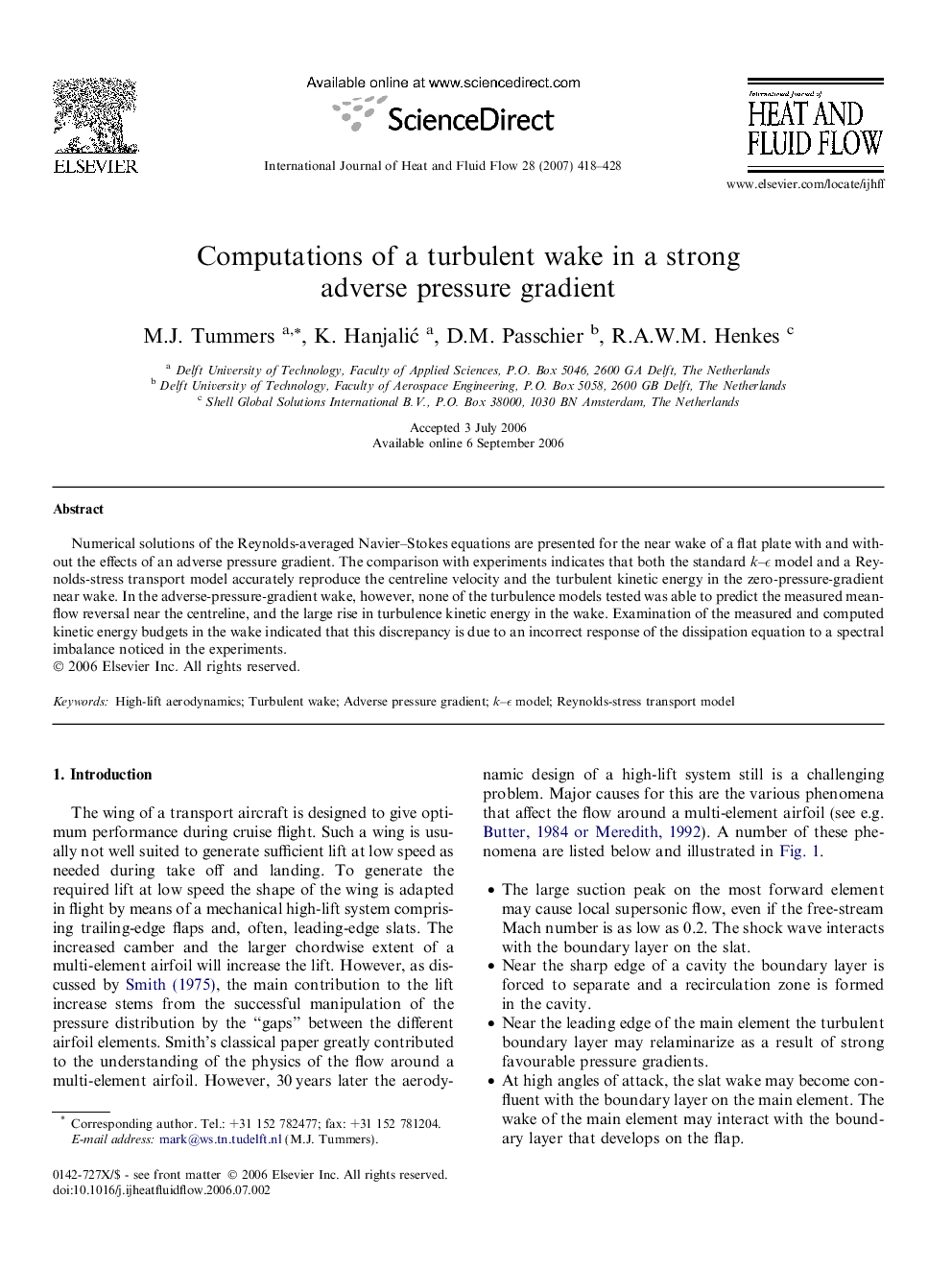| Article ID | Journal | Published Year | Pages | File Type |
|---|---|---|---|---|
| 656129 | International Journal of Heat and Fluid Flow | 2007 | 11 Pages |
Numerical solutions of the Reynolds-averaged Navier–Stokes equations are presented for the near wake of a flat plate with and without the effects of an adverse pressure gradient. The comparison with experiments indicates that both the standard k–ϵ model and a Reynolds-stress transport model accurately reproduce the centreline velocity and the turbulent kinetic energy in the zero-pressure-gradient near wake. In the adverse-pressure-gradient wake, however, none of the turbulence models tested was able to predict the measured mean-flow reversal near the centreline, and the large rise in turbulence kinetic energy in the wake. Examination of the measured and computed kinetic energy budgets in the wake indicated that this discrepancy is due to an incorrect response of the dissipation equation to a spectral imbalance noticed in the experiments.
